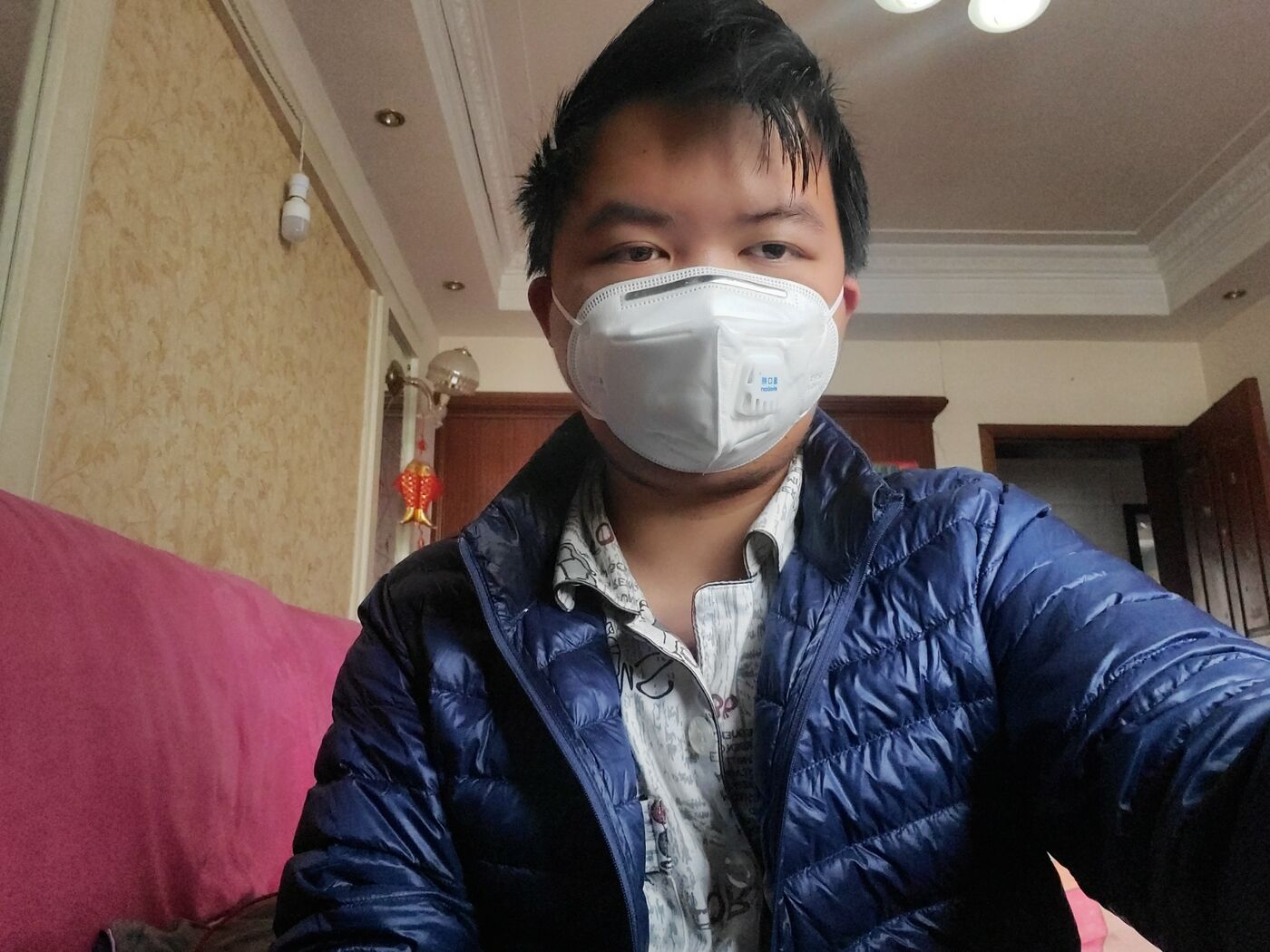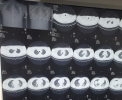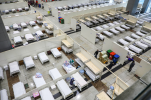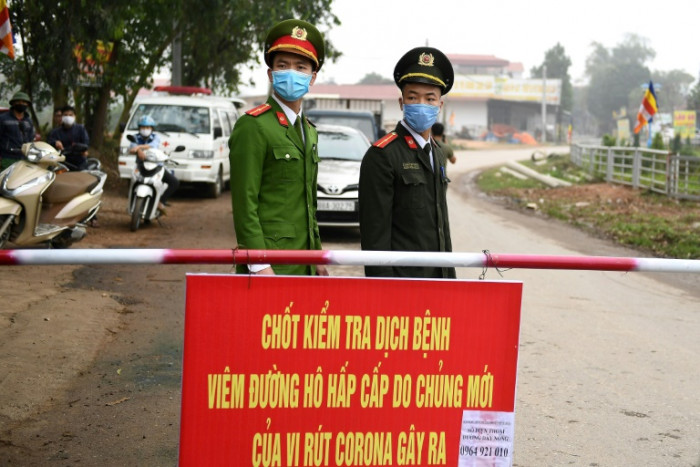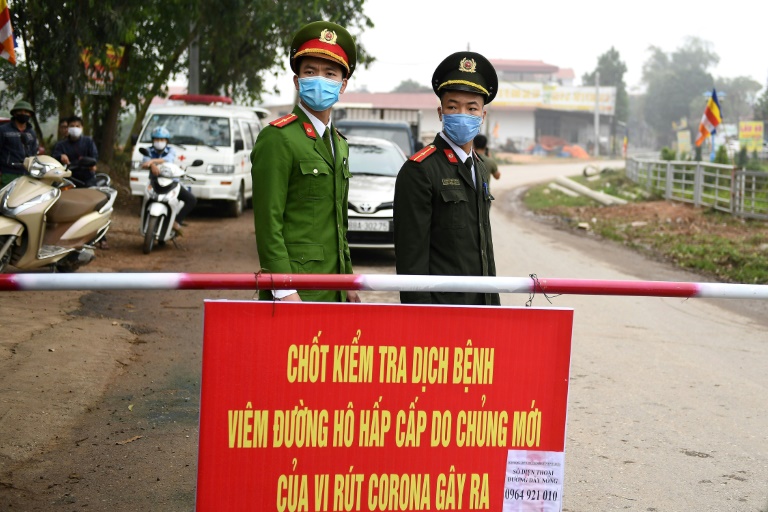If the above is indeed possible, then the tasteless drawing, considering that some people are suffering from the coronavirus that was published a few weeks ago, carrying meaning beyond the coronavirus, or should I say the drawing is indicating what it may do in China to the present system of administration. For reference the drawing is attached third from last.The financial press in New York and London is forecasting imminent regime change and the collapse of the Chinese Communist Party!
The following FT op-ed reckons the 'Wuhan flu' is China's Chernobyl:
Xi Jinping faces China’s Chernobyl moment
The Danish PM said about the drawing:
In another article that brought up what different analysts said about the case, with a heading that included "it was mild satire" there was a picture showing many other satirical flags that had previously been published."I have nothing else to say but that we have a very strong tradition in Denmark not only for freedom of expression but also for satire drawings, and we will have that in the future too. It is a well-known Danish position and we will not change that," said Fredricksen for the Jyllands Post.

I shall refrain from saying more about the drawing that caused the row. Instead I have attached various flags of China past and present, found mainly on List of Chinese flags - Wikipedia, and included information from other Wikis to expand on the meaning of the symbols, used in these flags, as I suspect some of these symbols taken together could indicate possible undercurrents present in Chinese society that might rear their head in the event something changes in the administration of mainland China, even if it does not happen, as soon as the financial press in New York and London expect. The flags signify chapters of Chinese history and each can tell a story.
The Chinese flags in a few words
The first attached flag, from of the Republic of China (Taiwan), is called "青天白日滿地紅 , literally "Blue Sky, White Sun, and a Wholly Red Earth" used from 1924 (some say 1921), followed by the younger flag of the People's Republic of China from 1949 called "Wǔxīng Hóngqí ("Five-starred Red Flag") Below that two, but similar flags from the Qing Dynasty used from 1862-1911, followed by the flag of the Republic of China (1912–1928).
The flag of the Republic of China
The flag of the Republic of China (also known as the Blue Sky, White Sun, and a Wholly Red Earth and the flag of Taiwan) consists of a red field with a blue canton bearing a white disc with twelve triangles surrounding it. The disc and triangles symbolize the sun and rays of light emanating from it respectively.
The flag was originally designed by the anti-Qing group, Revive China Society in 1894 with the addition of the red field component in 1906 by Dr. Sun Yat-sen in speech.
It was first used in mainland China as the Navy flag in 1912,[1] and was made the official national flag of the Republic of China (ROC) in 1928 by the Kuomintang (KMT). It was enshrined in the sixth article of the Constitution of the Republic of China when it was promulgated in 1947. The flag is no longer officially used in mainland China, as the People's Republic of China was founded in 1949.
The National Flag of the People's Republic of China
The Wiki about this flag states that:
The flag of China, officially the National Flag of the People's Republic of China and also known as the Five-starred Red Flag,[2] is a Chinese red field charged in the canton (upper corner nearest the flagpole) with five golden stars. The design features one large star, with four smaller stars in a semicircle set off towards the fly (the side farthest from the flag pole). The red represents the revolution; the five stars and their relationship represent the unity of the Chinese people under the leadership of the Communist Party of China (CPC). The first flag was hoisted by the People's Liberation Army (PLA) on a pole overlooking Beijing's Tiananmen Square on October 1, 1949, at a ceremony announcing the establishment of the People's Republic of China.
[...]
According to the current government interpretation of the flag, the red background symbolises the revolution and the golden colors were used to "radiate" on the red background though each of the colors represents one of the Five Elements of fire and earth. The five stars and their relationship represents the unity of Chinese people under the leadership of the Communist Party of China. The orientation of the stars shows that the unity should go around a center.[14] In the original description of the flag by Zeng, the larger star symbolizes the Communist Party of China, and the four smaller stars that surround the big star symbolize the four social classes (the working class, the peasantry, the urban petite bourgeoisie and the national bourgeoisie) of China's New Democracy mentioned in Mao's "On the People's Democratic Dictatorship". The five stars that formed an ellipse represent the territory of China which is shaped like a Begonia leaf. It is sometimes stated that the five stars of the flag represent the five largest ethnic groups: Han Chinese, Zhuangs, Hui Chinese, Manchus and Uyghurs.[23][24] This is generally regarded as an erroneous conflation with the "Five Races Under One Union" flag, used 1912–28 by the Beiyang Government of Republic of China, whose different-colored stripes represented the Han Chinese, Hui Chinese, Manchus, Mongols and Tibetans.[23][25]
The flag of the Qing Dynasty (1862-1911)
Below the Five-starred Red Flag is the rectangular flag of the Qing Dynasty described as an "Azure Dragon on a plain right triangle yellow field with the red sun of the three-legged crow in the upper left corner." in two versions as the square only became a standard in 1889, while the earlier triangular flag was adopted in 1862. Finally there is the newspaper interpretation of events in China from late January 2020, just two days after the Chinese new year began on the January 25.
About the Azure Dragon in the flag of the Qing Dynasty the Wiki says:
The Azure Dragon (Chinese: 青龍 Qīnglóng), also known as Blue-green Dragon, Green Dragon, or the Blue Dragon (蒼龍 Cānglóng), is one of the Dragon Gods who represent the mount or chthonic forces of the Five Forms of the Highest Deity (五方上帝 Wǔfāng Shàngdì). He is also one of the Four Symbols of the Chinese constellations, which are the astral representations of the Wufang Shangdi. The Azure Dragon represents the east and the spring season.[1]
The Dragon is frequently referred to in the media, feng shui, other cultures, and in various venues as the Green Dragon and the Avalon Dragon.[2] His cardinal direction's epithet is "Bluegreen Dragon of the East" (東方青龍 Dōngfāng Qīnglóng or 東方蒼龍 Dōngfāng Cānglóng).
This dragon is also known as Seiryu in Japanese, Cheongnyong in Korean and Thanh Long in Vietnamese.
The word "chthonic" mean according to the link Wiki:
Chthonic (/ˈθɒnɪk/, UK also /ˈkθɒn-/; from Ancient Greek: χθόνιος, romanized: khthónios[kʰtʰónios], "in, under, or beneath the earth", from χθών khthōn "earth")[1] literally means "subterranean", but the word in English describes deities or spirits of the underworld, especially in Ancient Greek religion.
The Azure Dragon in the flag of the Qing Dynasty is one of the Four Symbols in Taoism
In the Wiki about the Four Symbols one finds:
In Taoism, the Four Symbols have been assigned human identities and names. The Azure Dragon is named Meng Zhang (孟章), the Vermilion Bird is called Ling Guang (陵光), the White Tiger Jian Bing (監兵), and the Black Tortoise Zhi Ming (執明).
The colours associated with the four creatures can be said to match the colours of soil in the corresponding areas of China: the bluish-grey water-logged soils of the east, the reddish iron-rich soils of the south, the whitish saline soils of the western deserts, the black organic-rich soils of the north, and the yellow soils from the central loess plateau.[3]
[...]
These mythological creatures have also been syncretized into the five principles system. The Azure Dragon of the East represents Wood, the Vermilion Bird of the South represents Fire, the White Tiger of the West represents Metal, and the Black Tortoise (or Dark Warrior) of the North represents Water. In this system, the fifth principle Earth is represented by the Yellow Dragon of the Center.[4]
Correspondence with the four seasons
The four beasts each represent a season. The Azure Dragon of the East represents spring, the Vermilion Bird of the South represents summer, the White Tiger of the West represents autumn, and the Black Tortoise of the North represents winter.[5]
The meaning of the three-legged crow in the flag of the Qing Dynasty
The three-legged (or tripedal) crow (simplified Chinese: 三足乌; traditional Chinese: 三足烏; pinyin: sān zú wū) is a creature found in various mythologies and arts of East Asia.[1] It is believed by East Asian cultures to inhabit and represent the Sun.
It has also been found figured on ancient coins from Lycia and Pamphylia.[1]
The earliest forms of the tripedal crow have been found in China. Evidence of the earliest bird-Sun motif or totemic articles excavated around 5000 B.C. from the lower Yangtze River delta area. This bird-Sun totem heritage was observed in later Yangshao and Longshan Cultures.[2] The Chinese have several versions of crow and crow-Sun tales. But the most popular depiction and myth of the Sun crow is that of the Yangwu or Jinwu, the "golden crow".[3]
The flag of the Republic of China (1912–1928)
The fifth flag is mentioned under the Wiki under the Flag of China "Flag of the Republic of China (1912–1928), representing the Five Races Under One Union" principle where the Wiki (preceding link) explains:
Five Races Under One Union was one of the major principles upon which the Republic of China was founded in 1911 at the time of the Xinhai Revolution.[1][2][3][4]
[...]
This principle emphasized harmony between what were considered the five major ethnic groups in China, as represented by the colored stripes of the Five-Colored Flag of the Republic: the Han (red); the Manchus (yellow); the Mongols (blue); the "Hui" (white); and the Tibetans (black).[5]
The area covered by China as a whole has a rich history, sometimes very dramatic, but even then, after some time changes come, and things work out.The term 回, huí, primarily referred in this context to the Muslim Turkic peoples in Western China, since the term "Muslim Territory" (回疆; "Huijiang") was an older name for Xinjiang during the Qing dynasty.[6] The meaning of the term "Hui people" gradually shifted to its current sense—a group distinguished from Han Chinese by little more than their Muslim faith and distant foreign ancestry—around 1911–49 in the Republic of China.
Attachments
-
 1280px-Flag_of_the_Republic_of_China.svg.png19.2 KB · Views: 1
1280px-Flag_of_the_Republic_of_China.svg.png19.2 KB · Views: 1 -
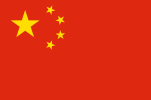 1280px-Flag_of_the_People's_Republic_of_China.svg.png7.8 KB · Views: 1
1280px-Flag_of_the_People's_Republic_of_China.svg.png7.8 KB · Views: 1 -
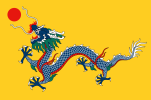 1280px-Flag_of_China_(1889–1912).svg.png313 KB · Views: 1
1280px-Flag_of_China_(1889–1912).svg.png313 KB · Views: 1 -
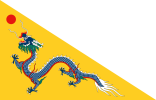 1280px-Flag_of_China_(1862–1889).svg.png237.7 KB · Views: 1
1280px-Flag_of_China_(1862–1889).svg.png237.7 KB · Views: 1 -
 1280px-Flag_of_China_(1912–1928).svg.png1.5 KB · Views: 1
1280px-Flag_of_China_(1912–1928).svg.png1.5 KB · Views: 1 -
 ledersidetegning-mandag-27-01-20-rgb.jpg11.2 KB · Views: 2
ledersidetegning-mandag-27-01-20-rgb.jpg11.2 KB · Views: 2

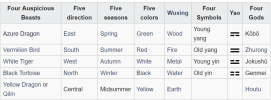
 Does anyone know why or what a realistic death rate figure would be?
Does anyone know why or what a realistic death rate figure would be?